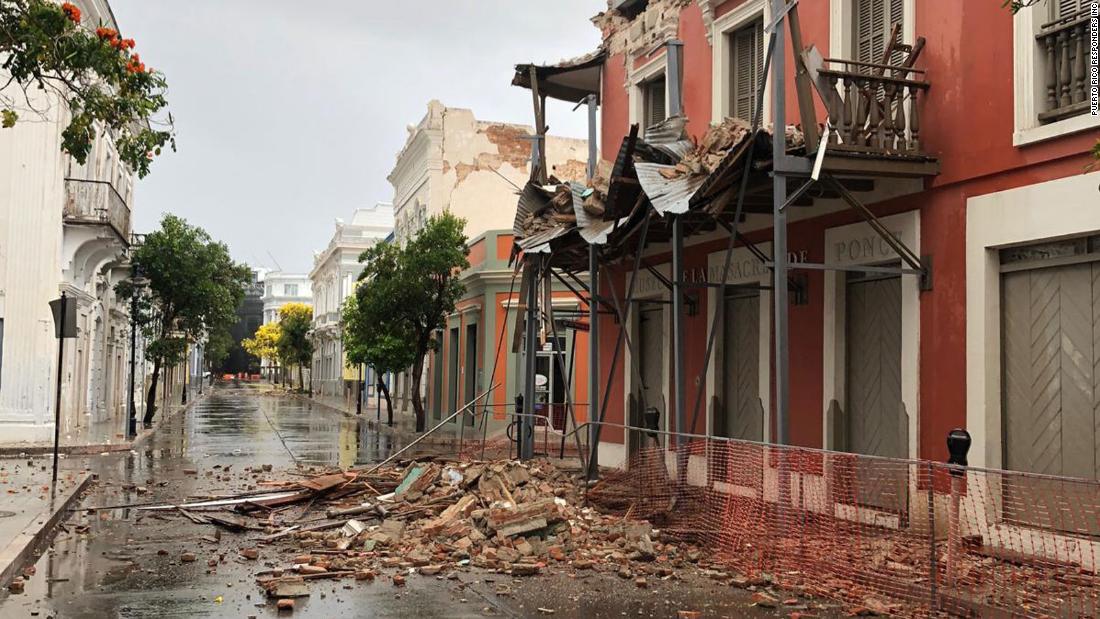Museo de ponce puerto rico: Museo de Arte de Ponce in Puerto Rico
Museo de Arte de Ponce
RECORRIDOS GUIADOS
Recorridos guiados por la exposición “La edad de oro del arte español”, a cargo de la Curadora Iraida Rodríguez-Negrón. Estos se llevarán a cabo en el Museo de Arte de Puerto Rico, en Santurce. Contaremos con interprete de lenguaje de señas. *Cupo limitado. Reserva tu espacio llamando al (787) 840-1510 o escribiendo a [email protected]
HORA: 6:00 P.M.
FECHAS:
18 DE AGOSTO DE 2022
29 DE SEPTIEMBRE DE 2022
27 DE OCTUBRE DE 2022
17 DE NOVIEMBRE DE 2022
29 DE DICIEMBRE DE 2022
19 DE ENERO DE 2023
LUGAR: Museo de Arte de Puerto Rico, en Santurce.
TALLERES DE MUNDILLO
Comenzamos este próximo viernes, 19 de agosto, con niveles intermedio y avanzado, ofrecidos por la reconocida maestra Sandra Rodríguez, de Moca.
Para matrícula o información, los interesados pueden llamar al (787) 840-1510 ext. 415 / 416 o enviar un correo electrónico a: educacion@museoarteponce. org
org
LUGAR: El edificio Anexo del Museo de Arte de Ponce.
TRAS BASTIDORES
Recorridos guiados por el Centro de Conservación Anton J. Konrad, a cargo Lidia V. Aravena, Jefe de Conservación del Museo de Arte de Ponce. En “Tras Bastidores” disfrutarás de la experiencia de participar de recorridos guiados por Conservadores del Museo, en las instalaciones del reconocido Centro de Conservación Anton J. Konrad de Museo de Arte de Ponce. Tendrás la oportunidad de observar colecciones en bajo diferentes tratamientos de conservación o restauración.
Compra tu admisión utilizando la plataforma www.boyants.com, a través de la sección de cultura. Los socios del Museo entran gratis y pueden reservar su espacio llamando al (787) 840-1510 ext. 415, 416 o escribiendo a [email protected]
HORA: 2:00 P.M.
FECHAS:
1 DE SEPTIEMBRE DE 2022
15 DE SEPTIEMBRE DE 2022
6 DE OCTUBRE DE 2022
20 DE OCTUBRE DE 2022
3 DE OCTUBRE DE 2022
17 DE NOVIEMBRE DE 2022
1 DE DICIEMBRE DE 2022
15 DE DICIEMBRE DE 2022
LUGAR: Segunda nivel del edificio Anexo del Museo de Arte Ponce.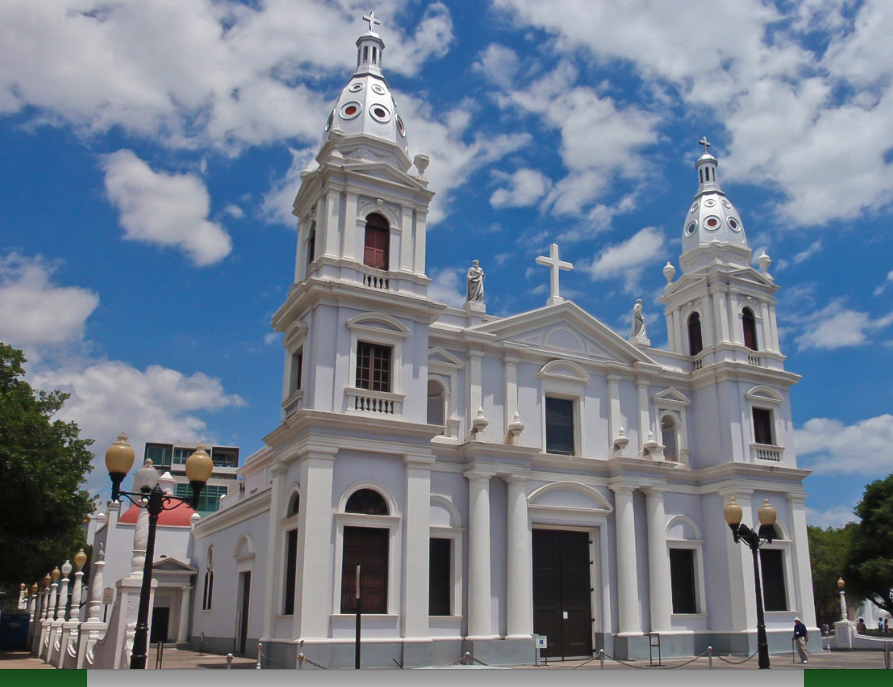
SABADOS EN EL MUSEO
Como parte de nuestra apertura parcial en el Anexo del Museo, los visitantes podrán apreciar por espacio de una hora, las exposiciones “Consonancias” y “Vis-á-vis”. También pueden disfrutar del hermoso Jardín Puerto Rico y pasar por la Tienda MAP para hacer sus compras. La visita no incluye recorridos guiados.
Comprar tu admisión utilizando la plataforma www.boyants.com, a través de la sección de cultura. Los socios del Museo entran gratis y pueden reservar su espacio llamando al (787) 840-1510 ext. 415, 416 o escribiendo a [email protected]
COMPRAR AQUI
FECHAS:
Comenzando desde el sábado, 3 de septiembre de 2022.
24 y 31 de diciembre estara cerrado al publico.
LUGAR: El edificio Anexo del Museo de Arte de Ponce.
TALLER DE COMICS JAPONES
Ofreceremos cuatro talleres de 2 horas cada uno, a cargo del artista Alfonso González.
FECHA: Comenzando el viernes, 16 de septiembre de 2022
HORA: 3:30 P.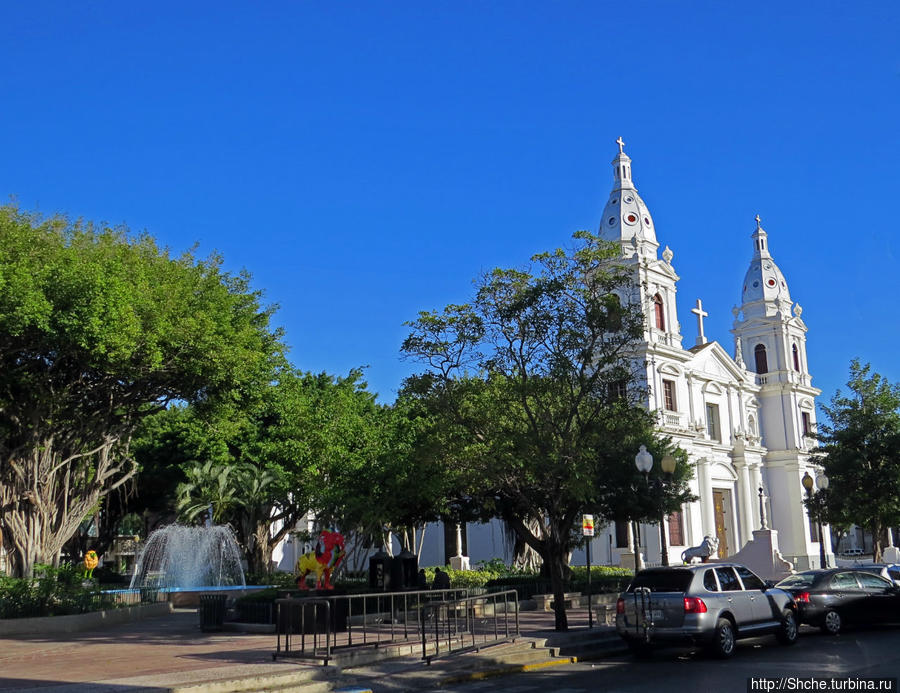 M.
M.
LUGAR: El edificio Anexo del Museo de Arte de Ponce
Para matrícula o información, los interesados pueden llamar al (787) 840-1510 ext. 415 / 416 o enviar un correo electrónico a: [email protected]
24 de marzo | 6:00 p.m.
Charla: “La ventana de Flaming June: Trabajo investigativo de nuestra obra icónica” a cargo de Ángel D. Santiago
Lugar: Museo de Arte de Puerto Rico, Santurce
19 de abril | 6:30 p.m.
MAP Art & Wine Nights
Lugar: Cocina Abierta, Condado
23 de abril | 2:00 p.m. y 4:00 p.m.
“Ice Cream & Art”, taller de pintura mientras saboreas un mantecado de Soft & Creamy
Lugar: Plaza del Caribe, Ponce
28 de abril | 6:00 p.m.
Recorrido de la exposición Arte Victoriano, a cargo de Sofía Cánepa
Lugar: Museo de Arte de Puerto Rico, Santurce
12 de mayo | 7:00 p.m.
A Toast to Flaming June
Lugar: Museo de Arte de Puerto Rico, Santurce
Para mas información sobre el evento puede enviar un correo electrónico a: rrodriguez@museoarteponce. org / [email protected]
org / [email protected]
19 de mayo | 6:00 p.m.
Lugar: Museo de Arte de Puerto Rico, Santurce
Recorrido de la exposición Arte Victoriano, a cargo de Sofía Cánepa
26 de mayo | 6:00 p.m.
Happy Art
Matotumba & Bairoa
Música, Food Trucks, Arte
Lugar: Museo de Arte de Ponce, Jardin Puerto Rico.
28 de mayo | 2:00 p.m. a 6:00 p.m.
Día internacional de los Museos 2022
Talleres de arte a cargo del Museo de Arte de Ponce en alianza con el Museo de Arte de Puerto Rico
Lugar: Plaza Las Américas, San Juan
16 de junio | 6:00 p.m.
Oradora: Lidia V. Aravena
Charla: “Limpieza devela al verdadero artista”.
Lugar: Museo de Arte de Puerto Rico, Santurce.
Apertura parcial del edificio Anexo del Museo
A partir del 30 de junio de 2022
Recorridos guiados por las exposiciones “Consonancias: Reencuentros con la colección” y “Vis-a- vis” Artistas ponceños en diálogo con la colección del Museo de Arte de Ponce”
Horarios jueves y viernes a las 10:00 a.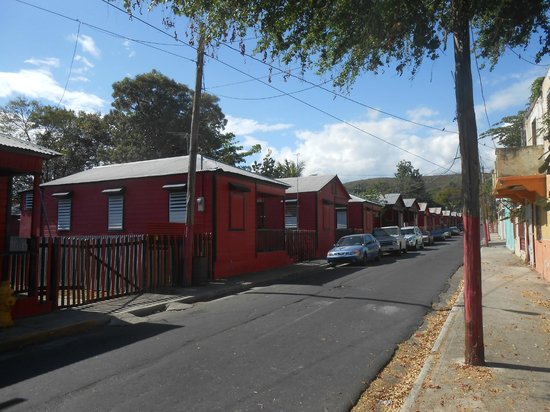 m., 1:00 p.m. y 3:00 p.m. El recorrido del viernes a la 1:00 p.m. es en inglés.
m., 1:00 p.m. y 3:00 p.m. El recorrido del viernes a la 1:00 p.m. es en inglés.
Cupo limitado. Admisión $5 a través de www.boyants.com sección “Cultura”/ Entrada gratuita para socios del museo. Puede reservar su espacio llamando al 787-840-1510 ext. 415, 416 o escribiendo a [email protected]
30 de junio | 6:00 p.m.
Recorrido de la exposición Arte Victoriano, a cargo de Sofía Cánepa.
Lugar: Museo de Arte de Puerto Rico, Santurce.
Verano en el MAP, Talleres de arte 5 al 21 de julio
Pueden participar personas de todas las edades, a partir de los 8 años. 10% de descuento para socios.
- CARICATURA JAPONESA (MANGA)
- PINTURA
- SERIGRAFIA
- LINÓLEO
- DIBUJO EN CABALLETE
- TALLA EN MADERA
Para más información sobre los talleres, puedes llamar al 787-840-1510 ext. 415 y 416 o escribirnos a [email protected]
Closed since early 2020, Puerto Rico’s Museo de Arte de Ponce faces long road to reopening
In January 2020, when Puerto Rico had not yet fully recovered from Hurricane Maria, the island was shaken by a wave of tremors climaxing in a very strong, 6. 4-magnitude earthquake. The aftermath was particularly dire in Ponce, the island’s second largest city after San Juan, with thousands displaced and most households severely impacted. Ponce is home to the Museo de Arte de Ponce (MAP), one of the leading museums in the Caribbean with a superb collection of Old Masters as well as Victorian and 20th-century Puerto Rican art. Though the collection was largely unharmed by the quake the building was damaged, forcing the museum to close. Then came the Covid-19 pandemic.
4-magnitude earthquake. The aftermath was particularly dire in Ponce, the island’s second largest city after San Juan, with thousands displaced and most households severely impacted. Ponce is home to the Museo de Arte de Ponce (MAP), one of the leading museums in the Caribbean with a superb collection of Old Masters as well as Victorian and 20th-century Puerto Rican art. Though the collection was largely unharmed by the quake the building was damaged, forcing the museum to close. Then came the Covid-19 pandemic.
The museum, which remains closed at the time of writing, recently announced a change of director. Alejandra Peña, is leaving Puerto Rico to direct the University of Minnesota’s Weisman Art Museum. Her successor Cheryl Hartup is no stranger: she was MAP’s chief curator between 2005 and 2012, before Peña’s arrival. Hartup’s recent experience as curator of academic programs and Latin American and Caribbean art at the Jordan Schnitzer Museum of Art at the University of Oregon will surely be an asset for her former employer, together with her knowledge of the Puerto Rican art milieu.
Hartup will find an institution that is in better shape, financially and organisationally, than it was when she left it nine years ago. Nevertheless, overseeing the building’s physical renovation is no small task.
Optimistic origins
MAP was founded in 1959 by Luis A. Ferré (1904-2003), an iron and cement industrialist, politician and possibly the island’s greatest-ever philanthropist. The museum occupies a plot of land on what were the outskirts of Ponce. In 1965, when the main building went up, sugarcane yielded to suburbia as Puerto Rico looked forward to a prosperous future that, in hindsight, turned out to be a short-lived illusion.
The early 2000s were still full of promise for a museum that was ripe for transformation. But by the time Ferré died, a few months shy of his 100th birthday, the institution had lost momentum. A public campaign was launched to finance a much-needed renovation and expansion project and in 2004 the trustees hired a new executive to oversee the process.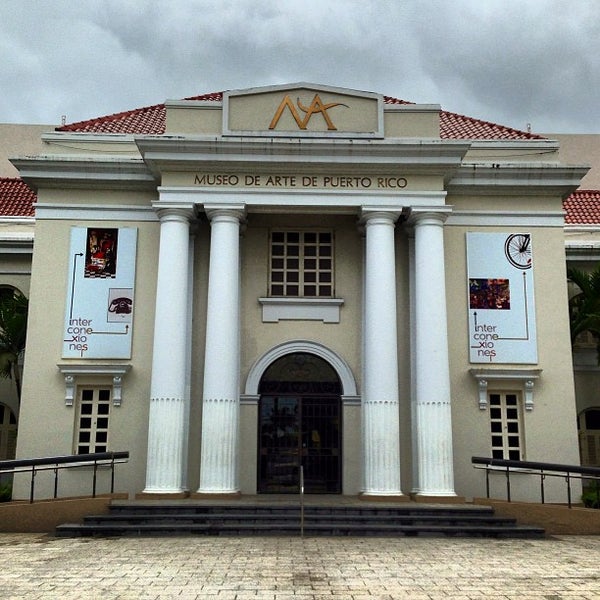 The appointee was Agustín Arteaga, a Mexican curator with impressive credentials as founding director of the Museo de Arte Latinoamericano de Buenos Aires. Arteaga’s interest in the contemporary art scene promised to breathe new life into a museum that was seen as stagnant and old-fashioned.
The appointee was Agustín Arteaga, a Mexican curator with impressive credentials as founding director of the Museo de Arte Latinoamericano de Buenos Aires. Arteaga’s interest in the contemporary art scene promised to breathe new life into a museum that was seen as stagnant and old-fashioned.
Detail of The last sleep of Arthur (1898) by Edward Burne-Jones Museo de Arte de Ponce, via Wikimedia
MAP closed to undergo its renovation in early 2008. The bar was admittedly high: the annex would rub shoulders with a 1965 gem of a Modernist building by Edward Durell Stone, the architect responsible (together with Philip Goodwin) for the Museum of Modern Art’s earliest premises. But design problems as well as space shortages soon became apparent. After much back-and-forth, the final cost of $30m nearly tripled the initial budget, depleting the endowment and burdening a small, privately-funded institution with almost no fundraising experience with a debt of almost $14m.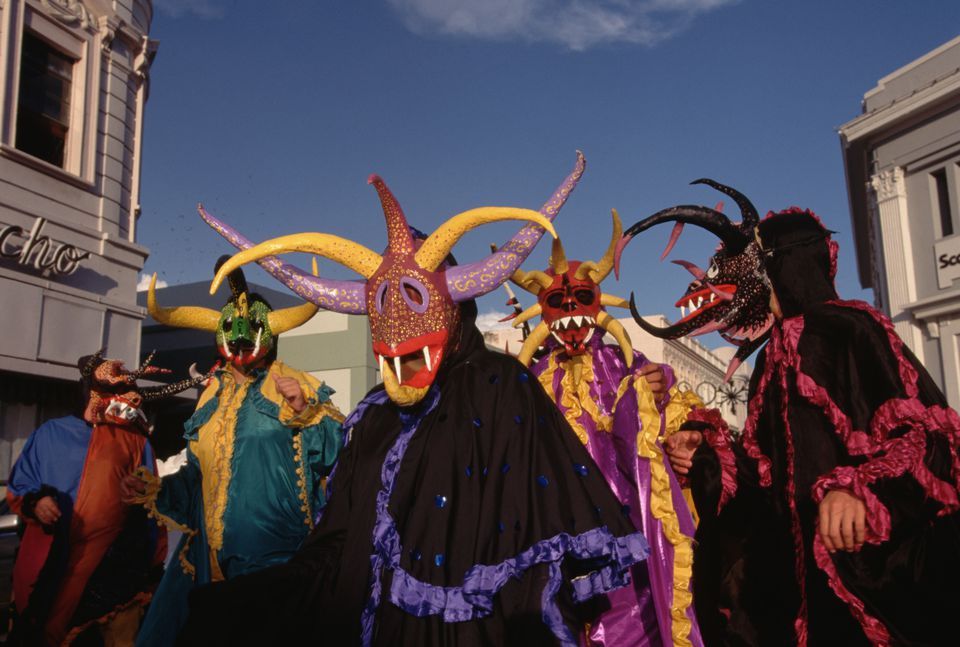 (Unfortunately, a scheduled seismological study was never carried out.) This happened precisely at the same time as the global economic recession became impossible to ignore.
(Unfortunately, a scheduled seismological study was never carried out.) This happened precisely at the same time as the global economic recession became impossible to ignore.
While the museum closed, pre-1900 paintings were sent off on touring exhibitions to Europe and the US—Edward Burne-Jones’s monumental, 9-by-21-foot The Sleep of King Arthur in Avalon (1898) was taken off the stretcher and rolled up to visit venue after venue. In 2010 the museum deaccessioned a superb Lioness and Heron by James Ward, which crept out of sight into private hands. Whereas the painting fit solidly within the collection, bridging the gap between its Regency and Victorian holdings, most of the proceeds from its sale went to defray the costs of shipping Roy Lichtenstein’s Brushstrokes in Flight, the sculpture donated by the Roy Lichtenstein Foundation that adorns the building’s main façade—a gesture as iconic as it is incongruous, since the museum holds almost no American art of the 20th century.
Hardship, rebirth and more hardship
The overambitious programming and inflated operating budget made MAP financially unsustainable at a time of global economic crisis. Still, in 2010 MAP reopened with a bang, seeking to upend its image as an old museum with old stuff for old people. Grants obtained from the Kress and Mellon foundations paid for collection catalogues focused on pre-1900 British and Spanish art, respectively.
Peña took over as director in 2013 and succeeded in several areas where MAP had previously failed. Formerly a high officer of Mexico’s Instituto Nacional de Bellas Artes overseeing 18 museums, she steered an institution that had come dangerously close to the brink. She invested in creating a culture of empowerment, teamwork and accountability. Under her leadership, MAP organised exhibitions that focused on the collection and built partnerships with institutions locally as well as internationally including the Universidad de Puerto Rico, Instituto de Cultura Puertorriqueña, Plantin-Moretus House, and the Frick Collection, to name a few.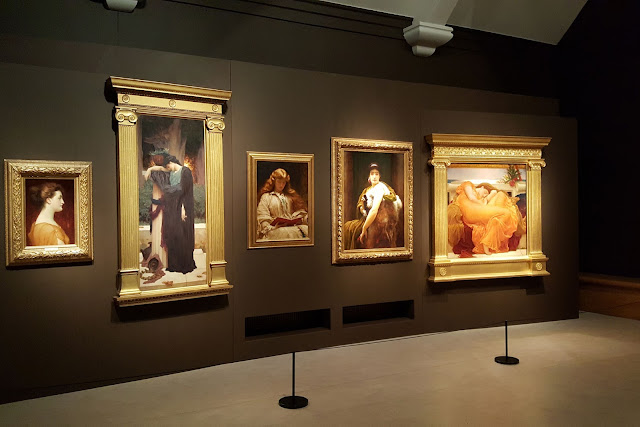 Between 2013 and 2015, MAP adopted an efficient collection management policy and redesigned its permanent display to improve the visitor experience and bring more artworks out of storage.
Between 2013 and 2015, MAP adopted an efficient collection management policy and redesigned its permanent display to improve the visitor experience and bring more artworks out of storage.
Francisco Oller, Hacienda Aurora (around 1898-99) Museo de Arte de Ponce, via Wikimedia
Around 2015, MAP made a belated but successful leap into Instagram and launched a YouTube series showcasing different aspects of the museum’s history, collections and temporary exhibitions. The fact that these videos were produced with public funding and local resources is indicative of the new ethos ushered in by Peña, which made it possible to balance the budget and pay off a cumbersome debt without sacrificing collection care, exhibitions, community outreach and even a few judicious acquisitions. What MAP has achieved under Peña is, in a way, so commonsense that it might be taken for granted. It should not be.
Until the building is renovated and MAP can reopen—which may take at least three years—an important question persists: to what extent can a museum operate without giving the public access to its collection through its physical premises? During lockdown in 2020, the museum offered free online classes; later, as soon as infection rates allowed, staff was sent to local schools to conduct education programs. The collection, however, remains in storage.
The collection, however, remains in storage.
MAP’s location, etched into its name, is both one of the institution’s defining characteristics as well as its Achilles heel. Already in 2008, concerns were raised about the bleak future ahead as younger locals were relocating from Ponce to San Juan (and Florida) in increasingly large numbers. After Hurricane Maria in 2017, the 2020 earthquake and Covid-19, the scenario has worsened; according to the US Census, Ponce’s population decreased by almost 20% between 2010 and 2020.
Living conditions around MAP have steadily deteriorated in ways that are beyond any institution’s control. Back in 1978, Ponce could attract a conservator previously employed by the Art Institute of Chicago, Anton J. Konrad. Another conservator, Lidia Aravena, who early on in her career moved from Chile to Ponce to work with Konrad, has kept an admirable standard of collection care for over 30 years; several of her trainees now work in museums across the US mainland, but none is in sight to substitute her as head of conservation at MAP.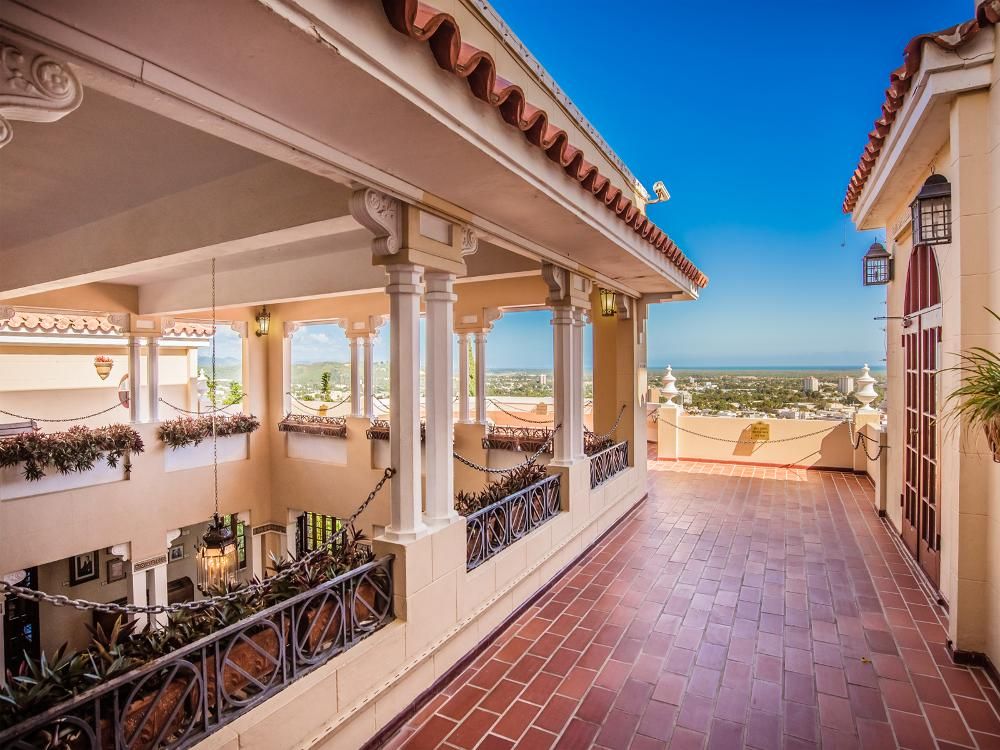 Ten years ago, Ponce could be described as charmingly decrepit; now it is unsafe and depopulated. Can MAP attract experienced museum professionals in the current circumstances?
Ten years ago, Ponce could be described as charmingly decrepit; now it is unsafe and depopulated. Can MAP attract experienced museum professionals in the current circumstances?
Frederic Leighton, Flaming June (around 1895) Museo de Arte de Ponce, via Wikimedia
When it finally reopens, MAP can continue to serve the local community but it probably cannot be the world-class cultural hub Ferré envisioned. The museum’s donors, board members and even some of its employees live a 90-minute drive away in San Juan, as does much of its public. Leaving Ponce and the Edward Durell Stone building behind, on the other hand, would also mean jettisoning an important part of the institution’s legacy.
Difficult decisions lay ahead for the director and trustees. We can only hope that they will not lose sight of the local community as they prioritise that which makes the museum unique: its quirky, under-researched and thrillingly multilayered collection.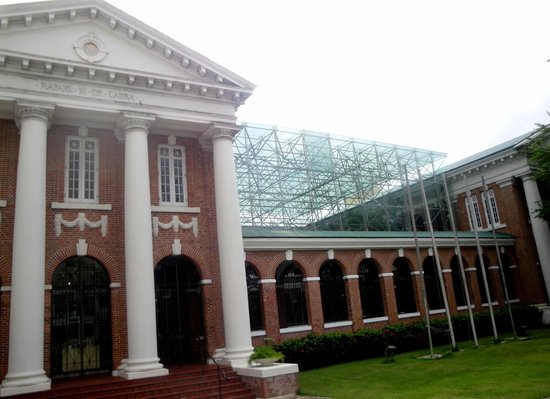 Exhibitions should not only display artworks, but also generate new knowledge. With a new director at the helm and a board presided over by Luis A. Ferré’s charismatic and dedicated granddaughter María Luisa Ferré, one should not underestimate MAP’s ability to reinvent itself in what seems like its darkest hour. After all, it did just that less than a decade ago.
Exhibitions should not only display artworks, but also generate new knowledge. With a new director at the helm and a board presided over by Luis A. Ferré’s charismatic and dedicated granddaughter María Luisa Ferré, one should not underestimate MAP’s ability to reinvent itself in what seems like its darkest hour. After all, it did just that less than a decade ago.
- Dr. Pablo Pérez d’Ors was a curator at the Museo de Ponce from 2011 to 2018 and is now director of Museu Fundación Juan March
Museo de la Historia de Ponce
The Museo de la Historia de Ponce (Museum of the History of Ponce) The museum is located in the historic Casa Salazar-Candal in the city of Ponce, Puerto Rico. The museum shows the city’s ecology, economy, architecture, government and elements of everyday life. It aims to promote research, preservation and dissemination of the historical heritage of Ponce and Puerto Rico. [4]
Opened in 1992, this was the first museum in Puerto Rico established to cover the history of the people of a town or city. [5] These are traces of the history of the city from the Taino Indians to the present day. The museum was opened under the administration of Mayor Rafael Cordero Santiago, as part of the Tercentennial celebration of the founding of the city. [6]
[5] These are traces of the history of the city from the Taino Indians to the present day. The museum was opened under the administration of Mayor Rafael Cordero Santiago, as part of the Tercentennial celebration of the founding of the city. [6]
It is located in the city’s historic district, a few minutes two blocks from the city’s central Las Delicias square, at the southeast corner of Isabel and Mayor Cantera streets. The museum proper is housed in the historic Casa Salazar-Candal but also includes the adjacent Rosali-Zapatere house, which houses the museum’s administratives offices, in addition to the vacant lot that once occupied the residence of the Schuck Gelpi family. [7] There are plans to expand the museum at the Casa Rosita Serralles, an adjacent hotel. [8]
Contents
Museum History
Main facade of the Ponce Historical Museum on Mayor and Isabel Streets
The idea of creating a Ponce history museum dates back to 1930, following an initiative by a group of citizens, but the project did not pan out then. Interest in the proposal revived years later under the Ponce Culture Secretariat. The plan visualizes museums to be built on a block bordered by Isabelle, Mayor, Cristina, and Salud streets, and Casa Salazar and Casa Zapater, two historic houses, were purchased as it was in the wasteland where Casa Shaq Gelpi once stood. However, the project stalled once again.
Interest in the proposal revived years later under the Ponce Culture Secretariat. The plan visualizes museums to be built on a block bordered by Isabelle, Mayor, Cristina, and Salud streets, and Casa Salazar and Casa Zapater, two historic houses, were purchased as it was in the wasteland where Casa Shaq Gelpi once stood. However, the project stalled once again.
The plan was revived again, but with modifications, in the late 1980s. This time the project came under the leadership of Ms. Maruja Candal Salazar and Dr. Neysa Rodriguez Deynes (curator and founder). They worked alongside a team of curators that included Lizette Cabrera Salcedo, Dr. José Molinelli, Alberto del Toro and JA Figueroa Irisarri, as well as museum workers Aníbal Sepúlveda, Nestor Barretto, and Jorge CARBONEL, members of the Carimar Research Center. Four-year period from 1989 to 1992 began the restoration of the Salazar and Zapater houses serve as the home of the museum, and the completion of research, planning and design of the museum’s first four permanent exhibition halls, namely, ecology, panorama, economic activity, and architecture. [9]
[9]
In 1994, the second phase of the project was started, under the direction of Lizette Cabrera Salcedo: the creation of two permanent exhibits, one health-oriented and one titled “Ponce in Puerto Rico’s political life, in addition to a multimedia presentation” Ponce is Ponce.” At 19In 98, the auditorium Ernesto Ramos Antonini, designed by the architect José Bermudez, was inaugurated under the direction of Lizette Cabrera Salcedo, on the site of the old Shaq Gelpi House.
Currently
By 2002, ten years after its founding, the Ponce History Museum had become one of the most active cultural centers in Puerto Rico, [10] and the most comprehensive museum of Puerto Rican history. [11] The museum provides a diverse cultural offering, designed to enhance and raise awareness of the study of Puerto Rico and the history of Ponceno. As part of the 10th anniversary celebrations, the third and final phase of the museum’s development was launched. It included two permanent exhibits in the fields of education and everyday life, and the creation of a general museum catalogue.
Building
The main building that houses the museum has stained glass windows, mosaics, and patios. Both buildings where the Museum is located are under of 20th century houses. The Salazar House was built in 1911 and was designed by Blas Silva Boucher in an eclectic neoclassical style. It is listed on the National Register of Historic Places. Zapater home, on the other hand, is a criollo townhouse typology. It was built in 1880 and restored in 1925. The Zapater residence has been home to some of Ponce’s most famous families, including the Clausells, Dapena, Zapater and Rosaly families. It was also designed by Blas Silva. [12]
Contents
The museum consists of 10 exhibition halls. It showcases the facts, documents, objects, and relics of Ponce’s history, demonstrating the city’s importance in the development of Puerto Rico’s history, including its intellectual, political, social, cultural, and economic dimensions. It also covers the city’s role in the artistic development of Puerto Rican culture in the fields of music, theatre, opera, literature, and journalism. The exhibits are depictions of ethnic cultures that influenced southern Puerto Rican culture, such as Spanish, African, and non-European immigrants.
The exhibits are depictions of ethnic cultures that influenced southern Puerto Rican culture, such as Spanish, African, and non-European immigrants.
Permanent exhibits of the museum
Ecology
The first exhibition hall depicts the land and climate of the municipality: its coast, plains and mountains. It shows how the nature of the city is the starting point for the study of its history. It includes a scale model of the municipality, with illustrations of its fertile soils, natural resources, and local fauna. The curator in charge of this exhibition was Dr. José Mollinelli, sponsored by Carimar.
Panorama
Human beings make an entrance in this exhibition describing how humans interact with the environment. Panorama Hall presents the origin of the settlement on Ponce and the evolution of its population from pre-Hispanic times through the early 20th century. It includes the regions and countries from which the current residents originated, highlighting Ponce’s heterogeneous population.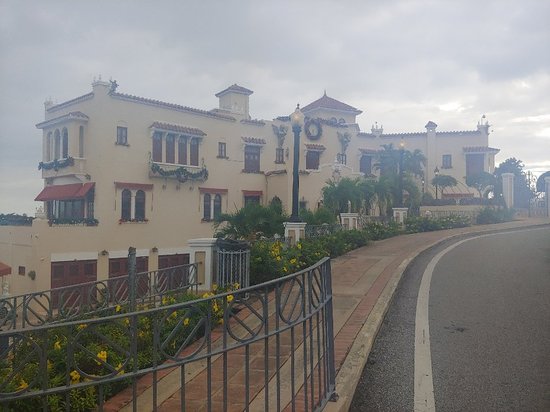 A scale model of the city shows Ponce in its greatest era of development, the late 19th century. The curator in charge of this exhibition was Dra. Neysa Rodriguez Deynes, sponsored by Carimar.
A scale model of the city shows Ponce in its greatest era of development, the late 19th century. The curator in charge of this exhibition was Dra. Neysa Rodriguez Deynes, sponsored by Carimar.
Politics
This exhibit focuses on Ponce’s role in Puerto Rican politics and the local political life of the people of Ponce. The exhibition occupies two rooms. The first does not illustrate the political development of Puerto Rico from 1508 to 1950. Photographic murals, documents, photographs and objects reveal the most significant periods in Puerto Rican political life and Ponce’s leading role in this development. The second room explains the creation of the Estado Libre Asociado, and the life and work of governors from Ponce: Luis A. Ferre and Rafael Hernandez Colón, as well as Roberto Sanchez Vilella, who claimed Ponce as his adopted city. Among the most significant figures in this exhibition hall is the Prince of Asturias Literary Prize (Premio Principe de Asturias de las Letras), a small bronze statue created by the famous Spanish sculptor Juan Miro.
Finance and Economics
One of the most important topics in the museum, economic development has been the biggest factor in the city’s growth from its founding through the present day. The development of the port, agriculture, industry and banking has supported Ponce’s economic development, which in turn has greatly fueled its cultural, social and intellectual developments evident in this showroom. The curator in charge of this exhibition was Lizette Cabrera Salcedo, sponsored by Carimar.
Architecture and urban planning
The evolution of Ponce’s urban landscape is illustrated for subsequent periods of development. Exhibitors exhibit the city’s architects and highlights typical elements of Ponce’s native architecture. It includes interior, military and institutional architecture, public works and the evolution of open space that define this city as a traditional urban center of importance. The hall includes a scale model of the city’s urban development, as well as a photographic montage including plans, buildings, architects and art installations.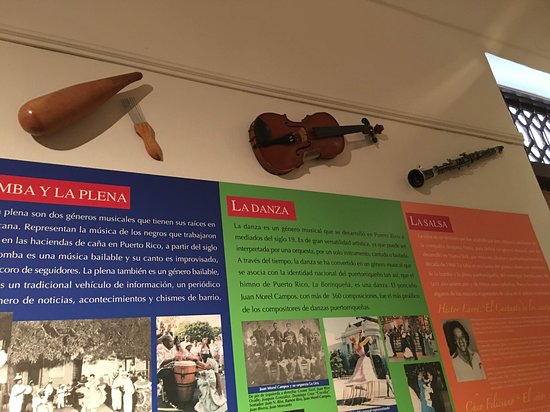 The curator in charge of this exhibition was the architect Alberto del Toro, sponsored by Carimar.
The curator in charge of this exhibition was the architect Alberto del Toro, sponsored by Carimar.
Health and Medicine
This exhibit shows the creation and development of Ponce’s major health institutions from 1863 to the present day and the medical community in the early 20th century to the 1940s. It also represents significant health events such as the discovery of Dr. Bailey C. Ashford of the parasite that causes Uncinaria hookworm (local hookworm) to the country’s first kidney transplant. This exhibit features documents, photographs, prescriptions, professional awards, and personal artifacts from times belonging to various Ponce doctors.
Collections
The process of bringing together the collections involved more than 200 of Ponce’s own citizens who lent or donated the photographs, documents, and objects that make up the collections. The current collection has over 3,000 photographs, documents, pieces of furniture, and objects on display in the exhibition halls or preserved in the museum’s storage areas.
The most important collections include:
Collection of Dr. Manuel de la Pila Iglesias
Covering a period from 1898 to 1950, this collection consists of documents, photographs and personal belongings of Dr. Manuel de la Pila Iglesias that show the evolution of healthcare and medicine in Ponce during the early to middle 20th century.
Juan Cisco Santiago Collection
Covering the period from 1930 to 1980, this collection includes documents, publications, objects, and photographs by renowned Ponce photographer Juan Cisco Santiago, and illustrating the political, social, cultural, and economic daily life of Ponce in the second half 20th century.
Dr. Ana Dolores Pérez Marchand Collection
Covering the period from 1911 to 1950, this collection includes photographs, documents, publications and personal items from Ponce’s first female physician, Ana Dolores Pérez Marchand. Dr. Perez Marchand was also one of the first three women’s physicians in Puerto Rico. This collection is a valuable resource for studying the role of women in the early 20th century, and the development of healthcare and medicine in Puerto Rico in general.
This collection is a valuable resource for studying the role of women in the early 20th century, and the development of healthcare and medicine in Puerto Rico in general.
Collection Emilio H. Pasarell
Covering the period from 1900 to 1920, this collection includes postcards from Ponce Photographer Jose Rodriguez Serra. The collection was donated in succession by Emilio H. Pasarell. They offer a visual panorama of Ponce’s streets, public and private buildings, plazas, and businesses in the first two decades of the 20th century.
Mariana Suárez de Longo Collection
This collection covers the period from 1949 to 1970. It consists of correspondence, invitations, graduation cards, newspaper clippings, telegrams, and photographs of educational activities in Ponce between 1949 and 1970
Ramon López Crespo Collection
The Ramon López Crespo Collection covers the period from 1960 to 1980. It consists of photographs, posters, programs of cultural events, magazines, letters, newspapers, postcards, flyers for musical and theatrical events, illustrating the cultural life and events in Ponce between 1960 and 1980.
The article has been translated automatically. Source: Wikipedia
Ponce (Puerto Rico) – frwiki.wiki
For the articles of the same name, see Ponce (disambiguation).
Ponce is Puerto Rico’s second city, located on the island’s south coast overlooking the Caribbean Sea.
Summary
- 1 story
- 2 Geography
- 3 Economy
- 4 Culture
- 4.1 Ponce Carnival
- 5 Sport
- 6 personalities associated with the city of
- 7 External link
History
Ponce Future Village was founded in 1692 by Juan Ponce de León y Loaysa, grandson of the Spanish conquistador Juan Ponce de León. Hence its nickname – the City of Lions. The village became a village in 1848 and an independent town in 1877. This growth was mainly due to diversified agricultural production (cane, corn, coffee) and the rum trade. At the end of the 19th century – centuries, Ponce was even more densely populated than San Juan.
In 1883 the city was destroyed by fire.
B This is the scene of the massacre in Ponce during a peaceful demonstration 64- and the anniversary of the abolition of slavery on the island.
Geography
Economy
The economy of Ponce is historically based on the cultivation of sugarcane, in particular for the rum distillery, which made the fortunes of great families Since World War II, this economy has declined greatly. Only the Serralles distillery continues to produce Don Q, but most of the cane is produced in Haiti and the Dominican Republic.
Culture
- La Croix de la Vigie, a 30 meters high concrete tower in the form of a cross, built on the historical site of the city’s watchtower and rising above it.

- Cathedral of Our Lady of Guadalupe
- Parc de Bombas, fire station turned museum with historical parts.
- The Ponce Art Museum, founded by Luis A. Ferra in 1965, has a collection of 3,000 works, quite remarkable for a city of its size, including high quality paintings of Italian, French and Flemish primitives. The collection also extends to 18th th and 19th – th centuries (including English) into the modern era with paintings by Puerto Rican artists. In fact, this is the only museum of international importance on the island.
Ponce Carnival
Ponce Carnival is the moment when the Puerto Rican Vejigante cultural tradition is at its best. It takes place annually during the week leading up to Ash Wednesday, in February or early March.
Sports
The city has a multi-sport stadium, Francisco Montaner Stadium, where various sports clubs in the city such as Leones de Ponce or River Plate Puerto Rico play.
